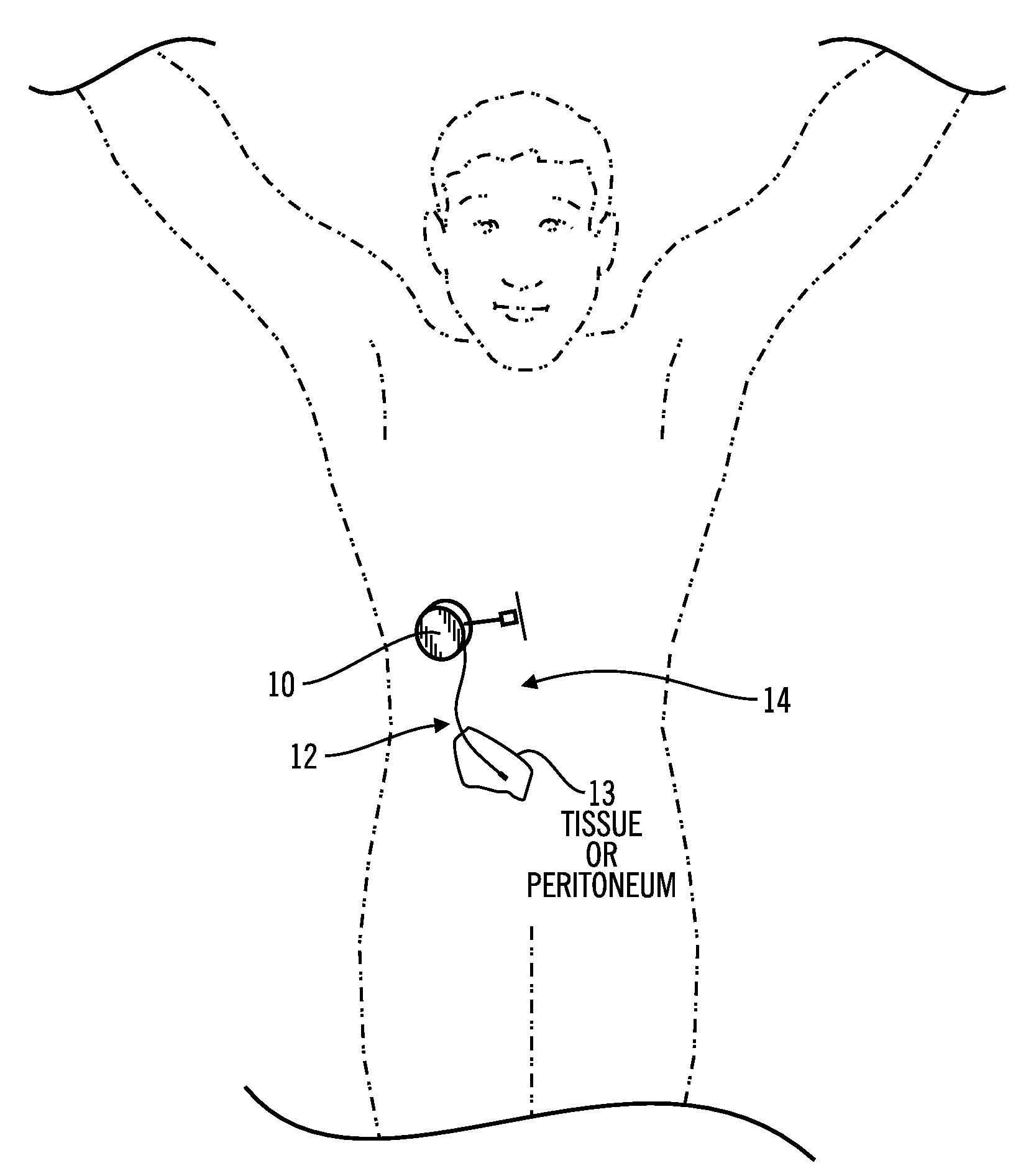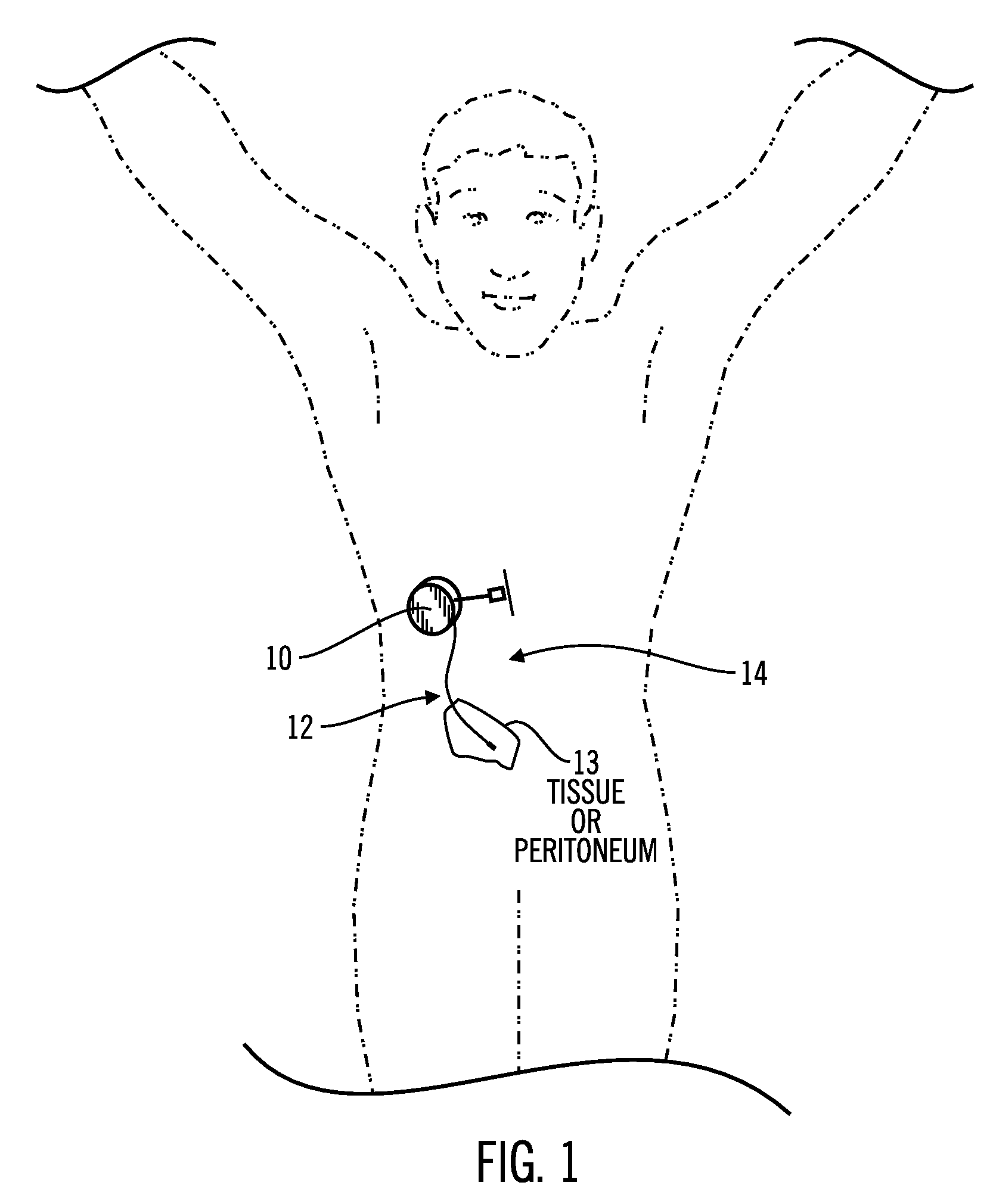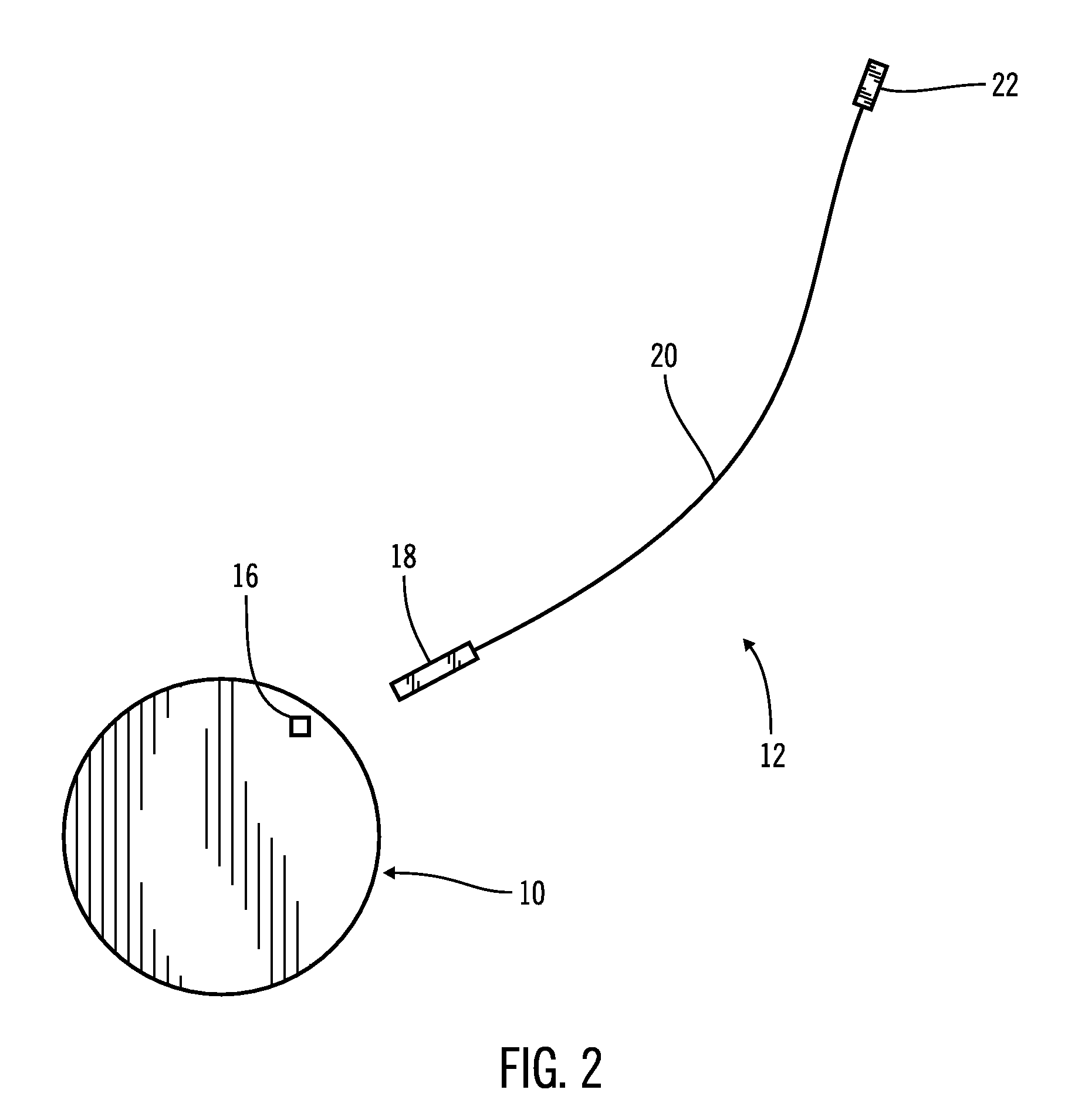Implantable sensor method and system
- Summary
- Abstract
- Description
- Claims
- Application Information
AI Technical Summary
Benefits of technology
Problems solved by technology
Method used
Image
Examples
Embodiment Construction
[0046]In the following description of preferred embodiments, reference is made to the accompanying drawings which form a part hereof, and in which are shown by way of illustration specific embodiments in which the invention may be practiced. It is to be understood that other embodiments may be utilized and structural changes may be made without departing from the scope of the preferred embodiments of the present invention.
[0047]FIG. 1 shows a general placement of an implant unit 10 and a sensor 12 in the human body according to an embodiment of the present invention. The implant unit 10 may be placed into a human body in a variety of locations such as, for example, adjacent to the abdominal cavity 14, or in other locations such as, for example, the spinal cavity or chest cavity. A sensor 12 connecting to the implant unit 10 may be located in the peritoneum 13, the membrane lining the abdominal cavity and connecting and supporting internal organs; in subcutaneous tissue 13, i.e., tis...
PUM
 Login to View More
Login to View More Abstract
Description
Claims
Application Information
 Login to View More
Login to View More - R&D
- Intellectual Property
- Life Sciences
- Materials
- Tech Scout
- Unparalleled Data Quality
- Higher Quality Content
- 60% Fewer Hallucinations
Browse by: Latest US Patents, China's latest patents, Technical Efficacy Thesaurus, Application Domain, Technology Topic, Popular Technical Reports.
© 2025 PatSnap. All rights reserved.Legal|Privacy policy|Modern Slavery Act Transparency Statement|Sitemap|About US| Contact US: help@patsnap.com



